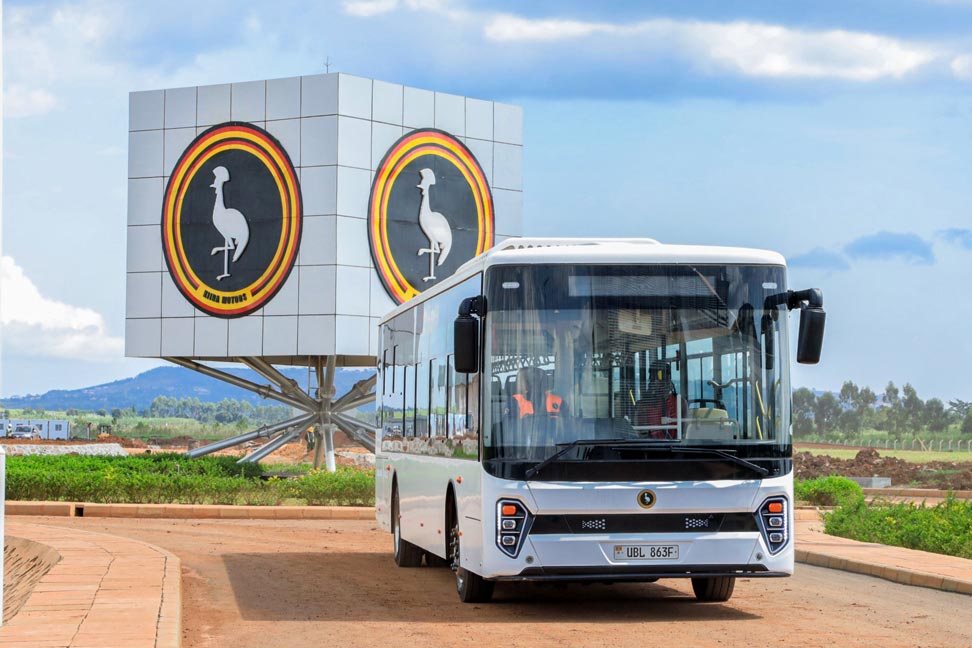
Growing up, the only economic sectors Uganda could name for itself were the agriculture and tourism sectors. Far and wide, Uganda has always been known for its agricultural produce and the lush landscapes that have earned it the pearl of Africa. Over the past few years, however, the country has witnessed a venture towards the automotive industry. The story of Uganda’s journey to develop its vehicle is a tale of innovation, resilience, and national pride; spearheaded by Kiira Motors Corporation (KMC), the initiative is truly building Uganda’s electric vehicle industry.
The seeds of this automotive dream were planted in 2007, within the walls of Makerere University’s College of Engineering, Design, Art, and Technology (CEDAT) where a group of enthusiastic students and lecturers embarked on a project to develop a hybrid electric vehicle as part of a Vehicle Design Project between Makerere University and the Massachusetts Institute of Technology (MIT). The project was designed to foster innovation and practical skills among engineering students by challenging them to design and build a vehicle from scratch. The partnership with MIT provided valuable technical expertise and guidance for the complex project.
The team, composed of some of the brightest engineering minds, set out with a bold objective: to create a sustainable and locally adaptable vehicle that could address the transportation needs of Uganda and possibly other African countries. Thus, they focused on developing a hybrid electric vehicle, recognising the importance of sustainable technology in reducing carbon emissions and the reliance on fossil fuels.
In 2011, after years of hard work, extensive research, and numerous trials, the pioneering team unveiled their first creation: the Kiira EV, Africa’s first electric vehicle designed and built in Uganda. The Kiira EV was a two-seater vehicle powered entirely by electricity with a capacity to drive for about 80 kilometres on a single charge. This impressive achievement not only showcased the technical expertise of Ugandan engineers but also highlighted the potential for local innovation to address global challenges.
The unveiling of the Kiira EV ignited a new vision for Uganda, highlighting the possibility of developing a homegrown automotive industry that could create jobs, foster technological advancement, as well as reduce the country’s dependence on imported vehicles, aligning perfectly well with Uganda’s broader goals of industrialisation and economic self-sufficiency.
Recognising the significance of this achievement, the Ugandan government decided to support the commercialisation of the project with the establishment of Kiira Motors Corporation (KMC) in 2014 as a state-owned enterprise. KMC’s objective was a straightforward one: to drive Uganda’s automotive ambitions forward, transforming from a university project to a national industrial initiative.
KMC’s journey has been marked by the development of several prototypes, each demonstrating the potential of Ugandan engineering.
Kiira EV, the first fully electric car made in Uganda, set the foundation for all future developments.
Kiira EV Smack, a hybrid sedan that combines an internal combustion engine with an electric motor, was the second prototype made. This vehicle reflected KMC’s commitment to sustainable mobility by offering a practical solution that bridges the gap between conventional fuel-powered cars and fully electric ones. Its hybrid design enables efficient operation in various conditions and situations.
The Kayoola Solar Bus came in next in 2016. KMC took a significant leap forward with the unveiling of the Kayoola Solar Bus, a solar-powered bus designed for urban mass transportation. This innovative vehicle came equipped with solar panels on its roof, allowing it to harness and utilise solar energy for an 80-kilometre journey on a sunny day. This made it particularly well suited for Uganda, a country with abundant sunlight and a practical, environmentally friendly solution to transportation.
The Kayoola EVS. Introduced in 2019, this model represents the pinnacle of KMC’s progress in electric vehicle technology so far. This fully electric bus is designed for urban mass transportation with a travel distance of up to 300 kilometres on a single charge. With its impressive travel range and environmentally friendly design, the Kayoola EVS demonstrates KMC’s commitment to driving the future of Uganda’s automotive industry.
One of the most notable moments in KMC’s journey was the commencement of construction on a dedicated manufacturing plant in Jinja in 2018. The facility, spread over 100 acres of land, is designed to produce 5,000 vehicles annually. This goes a step to show Uganda’s commitment to becoming a viable player in the global automotive industry.
However, despite its remarkable progress, KMC is still faced with several challenges.
Funding: Establishing an automotive industry from the ground up requires a significant investment. While the government has offered assistance, securing consistent and adequate funding remains a challenge.
Furthermore, there is a deficiency in the technical expertise necessary to propel the industry forward. Establishing a proficient workforce to uphold and advance the industry is crucial. Although KMC has dedicated resources to training programs, the lack of specialised technical knowledge remains a significant obstacle.
Infrastructure plays a critical role in the automotive industry’s success. This includes a reliable electric supply and advanced manufacturing facilities, which are still being developed to ideal standards in Uganda.
Market Penetration: Convincing the local market to embrace domestically produced vehicles over imported ones poses a significant challenge. KMC must build a reputation for reliability and quality to gain consumer trust.
Today, Kiira Motors Corporation stands as a beacon of Uganda’s industrial potential. The company continues to refine its prototypes and expand its production capabilities. With the Jinja plant nearing operational capacity, KMC aims to roll out its first batch of commercially viable vehicles soon.
Amidst all this, the government remains a staunch supporter, recognising the broader economic benefits of a thriving automotive industry in terms of job creation, technological advancement, and economic impact.
As Uganda drives towards manufacturing electric vehicles, it not only steers towards economic growth but also inspires other African nations to dream big and drive their innovation and prosperity.
1 thought on “Kiira Motors – Electric Vehicles Manufacturing in Uganda”
Pingback: Understanding Uganda’s New Curriculum For Lower Secondary: Thinking Outside The Box - Nymy Net